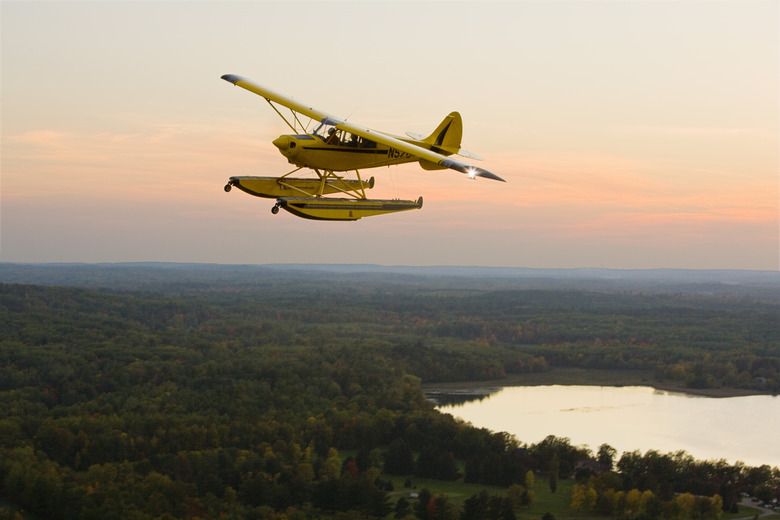How Does Thrust Affect Aerodynamics?
Lift, drag, weight and thrust are all forces that interact with each other to determine the aerodynamics of an object — that is, the way it moves through the air. While lift is the force that must overcome the weight of an object in order to carry it up off the ground, thrust must overcome the force of drag in order for the object to move through the air.
What Is Thrust?
What Is Thrust?
According to Newton's third law of motion, every action has an equal but opposite reaction. When the force of thrust is exerted on an object, it will cause the equal but opposite reaction of moving the object through the air. A good example of how thrust works is an airplane in flight; thrust is generated mechanically by the propellers, which push air backward and cause the equal but opposite reaction of moving the plane forward.
What is Drag?
What is Drag?
Drag is the force that pushes back on an object as it tries to move through the air, causing it to slow. The amount of drag exerted on an object depends on the size and shape of the object; a small round object like a baseball will experience less drag than a big, boxy car. The amount of drag exerted on an object also depends on the medium through which it is moving; for example, it is easier to move through air than water.
How Does Thrust Affect Aerodynamics?
How Does Thrust Affect Aerodynamics?
In order for thrust to move an object forward, it must first overcome the effects of drag. In the case of an airplane, drag is the force exerted on the plane by the air it is pushing through. If enough thrust is generated mechanically by the engines of the plane, it will overpower the force of drag and propel the plane forward, allowing the wings to continue generating lift and keep the plane in the sky.
Thrust and Rockets
Thrust and Rockets
Another classic example of how thrust affects aerodynamics is rocket launches. In this case, the pressure created by the burning and ejection of rocket fuel pushes the rocket upward, creating enough thrust to overcome the forces of weight and drag being exerted on it and launch it up into the sky. The greater the speed at which the rocket fuel is expelled from the rocket, the greater the force pushing it up through the atmosphere will be.
Cite This Article
MLA
Rohde, Alison. "How Does Thrust Affect Aerodynamics?" sciencing.com, https://www.sciencing.com/thrust-affect-aerodynamics-22652/. 24 April 2017.
APA
Rohde, Alison. (2017, April 24). How Does Thrust Affect Aerodynamics?. sciencing.com. Retrieved from https://www.sciencing.com/thrust-affect-aerodynamics-22652/
Chicago
Rohde, Alison. How Does Thrust Affect Aerodynamics? last modified March 24, 2022. https://www.sciencing.com/thrust-affect-aerodynamics-22652/
